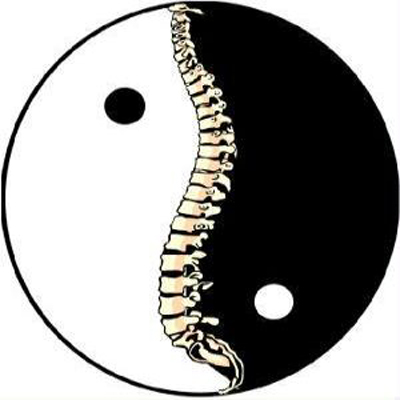

Welcome to the Acupuncture Section @ Chiro.Org! This section contains information about
acupuncture, meridians, ryodoraku, and information relating to this ancient analysis technique.




Acupuncture
This section was compiled by Frank M. Painter, D.C.
Send all comments or additions to: Frankp@chiro.org
If there are terms in these articles you don't understand, you can get a definition from the Merriam Webster Medical Dictionary. If you want information about a specific disease, you can access the Merck Manual. You can also search Pub Med for more abstracts on this, or any other health topic.
| Jump to: | Acu-Articles | Acu-Sources | Acu-Charts | Acu-SEARCH |




|
|
Conditions That Respond | Alternative Medicine Approaches to Disease |




Acupuncture Articles





Chronic Spinal Pain: Spinal Manipulation vs. Acupuncture vs. Meds
- A Brilliant Series of 3 Research Studies
The Pilot Study (1999)
Chronic Spinal Pain Syndromes: A Clinical Pilot Trial
Comparing Acupuncture, A Nonsteroidal Anti-inflammatory
Drug, and Spinal Manipulation
J Manipulative Physiol Ther 1999 (Jul); 22 (6): 376-381 ~ FULL TEXT
Randomization was successful. After a median intervention period of 30 days, spinal manipulation was the only intervention that achieved statistically significant improvements (all expressed as percentages of the original scores) with (1) a reduction of 30.7% on the Oswestry scale, (2) an improvement of 25% on the neck disability index, and (3) reductions on the visual analogue scale of 50% for low back pain, 46% for upper back pain, and 33% for neck pain (all P<.001). Neither of the other interventions showed any significant improvement on any of the outcome measures.
The Trial (2003)
Chronic Spinal Pain: A Randomized Clinical Trial Comparing
Medication, Acupuncture, and Spinal Manipulation
Spine (Phila Pa 1976) 2003 (Jul 15); 28 (14): 1490-1502
Randomization proved to be successful. The highest proportion of early (asymptomatic status) recovery was found for manipulation (27.3%), followed by acupuncture (9.4%) and medication (5%). Manipulation achieved the best overall results, with improvements of 50% (P = 0.01) on the Oswestry scale, 38% (P = 0.08) on the NDI, 47% (P < 0.001) on the SF-36, and 50% (P < 0.01) on the VAS for back pain, 38% (P < 0.001) for lumbar standing flexion, 20% (P < 0.001) for lumbar sitting flexion, 25% (P = 0.1) for cervical sitting flexion, and 18% (P = 0.02) for cervical sitting extension. However, on the VAS for neck pain, acupuncture showed a better result than manipulation (50% vs 42%).
The Long-term Follow-up (2005)
Long-Term Follow-up of a Randomized Clinical Trial Assessing
the Efficacy of Medication, Acupuncture, and Spinal Manipulation
for Chronic Mechanical Spinal Pain Syndromes
J Manipulative Physiol Ther 2005 (Jan); 28 (1): 3-11 ~ FULL TEXT
The results of this “fastidious” approach were able to add some information regarding the efficacy of treatment regimens in patients with chronic spinal pain syndromes. Overall, patients who have chronic mechanical spinal pain syndromes and received spinal manipulation gained significant broad-based beneficial short-term and long-term outcomes. For patients receiving acupuncture, consistent improvements were also observed, although without reaching statistical significance (with a single exception). For patients receiving medication, the findings were less favorable. Larger studies are now clearly justified.
End of the Trial Series




Primary Acupuncture Information Sources




Acupuncture Resources
Accreditation Commission for Acupuncture and Oriental Medicine (ACAOM)
Acubriefs (database of references on acupuncture)
American Academy of Medical Acupuncture (AAMA)
American Association of Acupuncture and Oriental Medicine (AAAOM)
National Center for Complementary and Alternative Medicine (NCCAM)
Traditional Chinese Medicines Integrated Database (TCMID)
Acupuncture Journals
Acupuncture in Medicine: J British Medical Acupuncture Society
American Journal of Chinese Medicine
BMJ Acupuncture in Medicine
Journal of Acupuncture and Meridian Studies
Journal of Acupuncture and Tuina Science
Journal of Chinese Medicine
Medical Acupuncture




Charts and Tables





Acupuncture Charts
We are very grateful to Dr. John Urbanski for the use of these charts!

Return to NUTRITION
Return to ALTERNATIVE MEDICINE
Since 11–15–1998
Updated 9–24–2025


| Home Page | Visit Our Sponsors | Become a Sponsor |
Please read our DISCLAIMER |